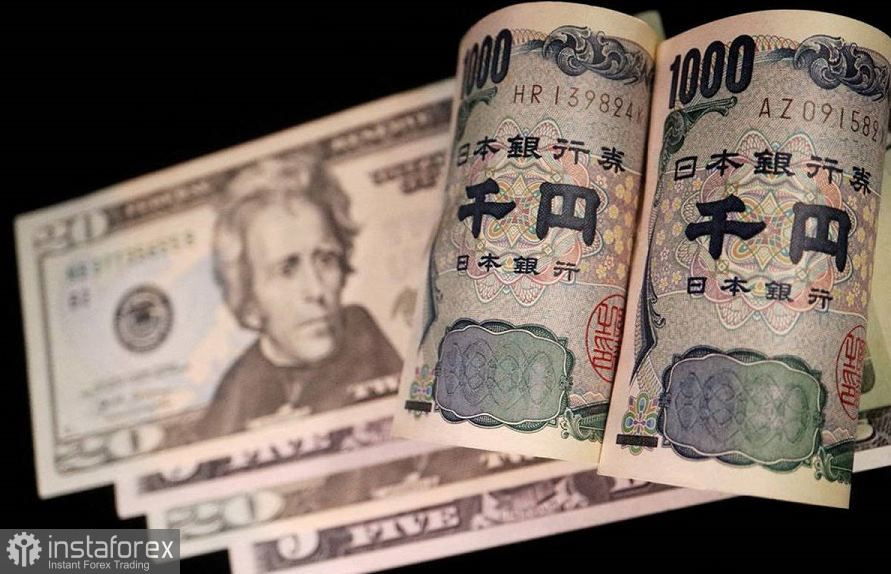More than a week has passed since the last currency intervention in Japan, so now we can draw certain conclusions. On the one hand, the Japanese authorities did not achieve the desired result: the yen could not return to its previous positions, even to the levels of September, when the USD/JPY pair was trading in the range of 142-144. On the other hand, the intervention suspended the process of rapid devaluation of the yen. On October 21, the pair was already approaching the boundaries of 152 figures, whereas during the last week the "ceiling" of the temporary price range was the mark of 149.00. At the same time, the lower limit of the echelon is located around the mark of 146.20.
But here it is necessary to take into account one important circumstance: over the past 10 days, the dollar has been under background pressure, and in fact – in limbo ahead of the November Federal Reserve meeting. Rumors are actively circulating in the market that the Fed will soon loosen its hawkish grip, reacting to the slowdown of many macroeconomic indicators. This is a very controversial assumption, but, nevertheless, "effective": amid growing concern about this, the greenback feels very insecure. Just look at the dynamics of the US dollar index, which managed to update the monthly low last week. And although the greenback has regained its position (amid good data on US GDP growth in the third quarter), it still remains vulnerable. In particular, today we can again talk about the weakening of the US currency: the US dollar index is circling at the border of 110 and 111 figures.

However, today's price fluctuations cannot be trusted. Perhaps this applies to all currency pairs of the "major group", and USD/JPY is no exception here. Traders are justifiably nervous ahead of the announcement of the results of the November Fed meeting (they will be announced on Wednesday evening). The stakes are high, and all the assumptions of the "dovish nature" are very conditional and, in my opinion, unconvincing. Therefore, the current price fluctuations of USD/JPY can be ignored, since the vector of the pair's movement will be determined following the results of the Fed meeting.
It is obvious that the yen will follow the greenback, which, in turn, will react to the degree of "hawkishness" of the US central bank. If the rumors about a decrease in the pace of monetary policy tightening (after the November meeting) are not confirmed, the USD/JPY pair may well overcome the conditional price "ceiling" of 149.00. At the end of October, this target acted as a red line for the bulls. Let me remind you that we could observe a similar situation in September, only then the red line corresponded to the 146 mark. For several weeks, traders did not dare to overcome this level, fearing the reaction of the Japanese authorities. But gradually the onslaught of dollar bulls intensified amid rising inflation in the United States, the growth of hawkish expectations regarding the November Fed meeting and the dovish rhetoric of representatives of the Bank of Japan. Initially, USD/JPY bulls settled in the area of 147-149 figures, and then overcame the psychologically significant resistance level of 150. After that, currency intervention was a matter of time.
To date, a similar situation is developing for the pair. USD/JPY traders recovered quickly after the October intervention of the Japanese authorities, but bulls are hesitant to cross the updated red line: the price fluctuates in a wide price range of 146-149. It is quite obvious that the greenback sets the tone for trading, while the yen is forced to follow the dollar. It follows from this that the possible strengthening of the dollar this week will allow USD/JPY bulls to organize an upward attack to the first price barrier of 150.70 (the upper line of the Bollinger Bands indicator on the D1 timeframe).
If the Fed takes a hawkish (or rather, aggressive) position on the future prospects of a rate hike tomorrow, USD/JPY bulls will have their hands free in the context of the bullish breakthrough. Especially amid the dovish results of the BOJ's October meeting, which were announced last week. The Japanese central bank has maintained a soft monetary policy, while voicing relevant comments. BOJ Governor Haruhiko Kuroda made it clear that the central bank will not follow other central banks of the leading countries of the world and will not normalize monetary policy in the foreseeable future. According to most analysts, the BOJ will keep rates at the current level and continue large-scale stimulus until the end of this year and at least until the spring of 2023 (Kuroda leaves his post in April).
In other words, USD/JPY traders are currently focused on the US central bank. If the Fed members refute rumors about a slowdown in the pace of tightening of the monetary policy, the pair will rush up and will certainly overcome the upper limit of the above range. Obviously, the Japanese Ministry of Finance could be a threat to this, but this circumstance will not prevent USD/JPY bulls from reaching the level of 150.70 (the upper line of the Bollinger Bands on D1).
 English
English 
 Русский
Русский Bahasa Indonesia
Bahasa Indonesia Bahasa Malay
Bahasa Malay ไทย
ไทย Español
Español Deutsch
Deutsch Български
Български Français
Français Tiếng Việt
Tiếng Việt 中文
中文 বাংলা
বাংলা हिन्दी
हिन्दी Čeština
Čeština Українська
Українська Română
Română

